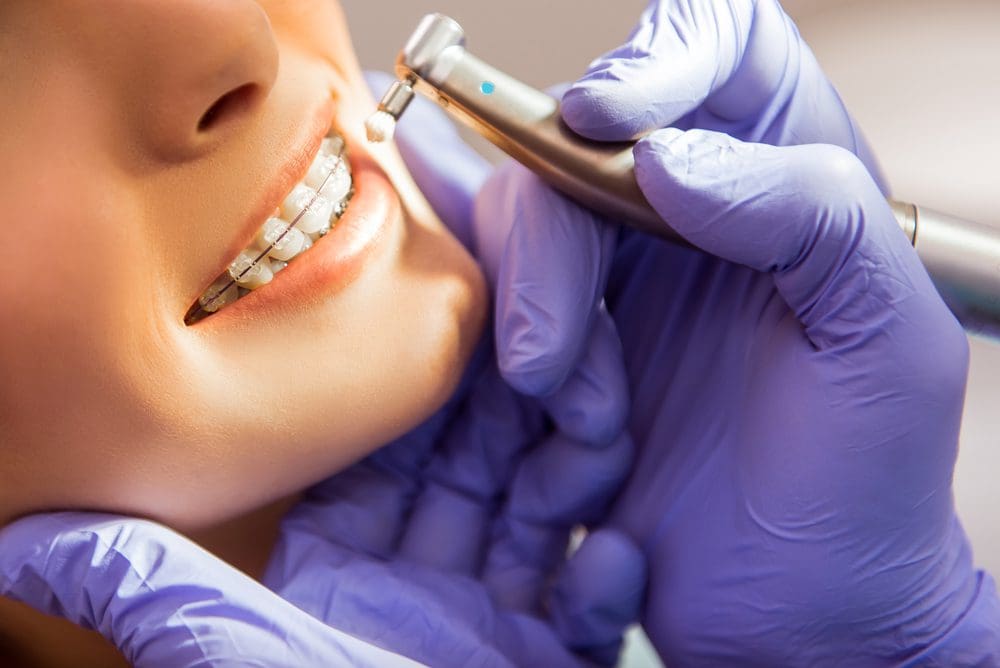Locating the Right Cumming Orthodontist for Your Braces and Aligners Needs
Locating the Right Cumming Orthodontist for Your Braces and Aligners Needs
Blog Article
Comprehensive Guide to Orthodontics Treatments for Correcting Dental Misalignments
Understanding the intricacies of each treatment, including their mechanisms, benefits, and possible disadvantages, is important in making informed choices regarding one's orthodontic therapy. As we browse with the extensive overview to orthodontic treatments for correcting oral imbalances, the detailed information of each method will unravel, dropping light on the path towards a harmonious and useful dental alignment.
Orthodontic Procedures Review

Along with clear aligners and traditional braces, orthodontists may likewise suggest other treatments like headgear, palatal expanders, or retainers to address certain alignment issues (orthodontist). These treatments are tailored per individual's one-of-a-kind requirements and might include a combination of therapies to achieve the preferred results. Normal adjustments and monitoring are vital components of orthodontic therapy to guarantee progression gets on track and to make any type of essential adjustments in the process. By undertaking orthodontic treatments, patients can not just attain a straighter smile but also enhance their total dental health and wellness and function.
Typical Dental Braces: Just How They Work
When thinking about orthodontic treatments for dental misalignments, conventional dental braces stick out as a tried and true technique for dealing with teeth positioning. Standard dental braces contain braces, wires, and bands that collaborate to apply continuous pressure on the teeth, slowly relocating them right into the wanted placement. The brackets are connected to the teeth using an unique adhesive, and the wires are threaded through the brackets. By changing the tension of the wires, orthodontists can regulate the instructions and force related to each tooth, guiding them into appropriate positioning gradually.
As pressure is applied to the teeth with the braces, the bone surrounding the teeth is reshaped to support the brand-new tooth settings. Patients will require routine adjustments at the orthodontist's office to guarantee the braces proceed to apply the appropriate stress for efficient teeth activity.
Unnoticeable Aligners: Advantages And Disadvantages
Unnoticeable aligners use a convenient and very discreet alternative to traditional braces for fixing dental imbalances. These clear, personalized trays are virtually undetectable when worn, making them an appealing alternative for people looking for an extra cosmetically pleasing orthodontic therapy. Among the key benefits of unseen aligners is their removability, permitting easier maintenance of oral hygiene contrasted to standard dental internet braces. Individuals can get rid of the aligners prior to consuming or cleaning their teeth, decreasing the threat of food obtaining embeded the appliance and simplifying the cleaning process.

Surgical Orthodontic Options
Surgical treatments in orthodontics existing viable alternatives for dealing with complex dental imbalances that may not be efficiently settled with standard orthodontic therapies. While unnoticeable aligners and conventional braces can remedy several orthodontic concerns, particular situations need surgical intervention to attain optimal outcomes. Surgical orthodontic choices are typically suggested for severe malocclusions, significant jaw discrepancies, and instances where the underlying bone structure requires modification to accomplish proper placement.
One typical surgical orthodontic procedure is orthognathic surgical treatment, which entails rearranging the jaws to fix functional issues such as difficulty eating or speaking. This surgical procedure is often carried out in collaboration with an orthodontist who aids line up the teeth prior to and after the procedure. Surgical orthodontics might also include procedures to expose impacted teeth, remove excess gum tissue, or improve the jawbone to produce an extra unified face profile.
Prior to considering medical orthodontic options, people undergo a detailed evaluation to establish the need and potential benefits of such interventions. orthodontics. While surgery might seem challenging, it can considerably enhance both the function and visual appeals of the smile in instances where conventional orthodontic therapies fall short
Retainers and Post-Treatment Care

Failure to abide with post-treatment treatment guidelines can result in relapse, where the teeth slowly move back in the direction of their initial positions. Consistent retainer wear, excellent dental hygiene, and routine oral check-ups are crucial for maintaining the results achieved with orthodontic surgery and guaranteeing the long-lasting security of view publisher site the fixed oral alignment.
Conclusion
In verdict, orthodontic treatments supply numerous alternatives for dealing with dental imbalances. Surgical orthodontic choices are offered for much more extreme misalignments. On the whole, orthodontic procedures can effectively improve dental health and wellness and visual appearance.
As we browse via the thorough guide to orthodontic treatments for remedying dental imbalances, the detailed details of each method will certainly unravel, losing light on the course towards a harmonious and practical dental positioning. - cumming aligners
One of the most usual orthodontic therapies is the use of braces, which consist of metal brackets and cables that apply gentle pressure to gradually shift teeth into the desired setting.When thinking about orthodontic treatments for dental imbalances, standard dental braces stand out as a tried and true technique for dealing with teeth placing. Additionally, unseen aligners may not be appropriate for complex orthodontic problems that call for more considerable teeth movement, as they are generally recommended for light to modest situations. Retainers are tailor-made orthodontic tools created to hold teeth in their corrected placements after the conclusion of orthodontic therapy.
Report this page